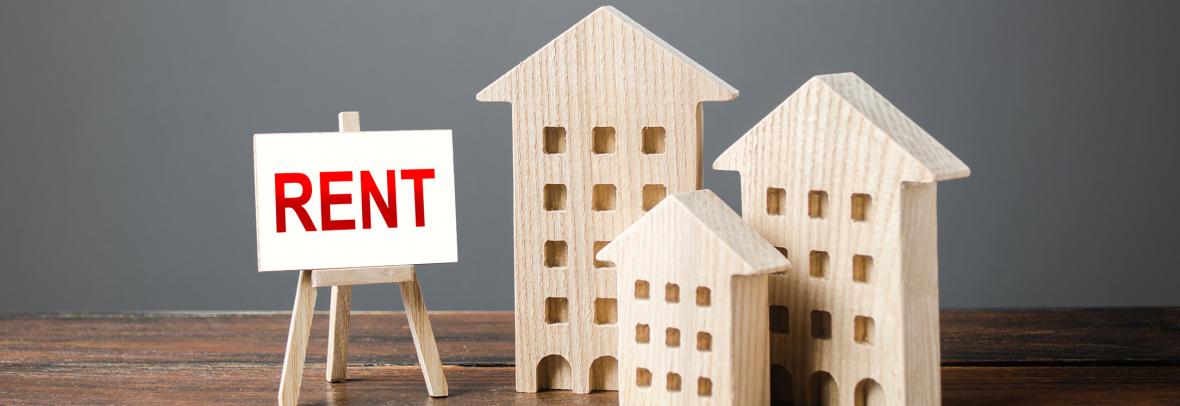
Aug. report: Rental prices hit double-digit growth for the first time in two years and grew three times faster than in March 2020, prior to the pandemic. Over half of the 50 largest metros reported rents with double-digit gains over last year, including Tampa, Miami and Orlando.
SANTA CLARA, Calif. – The U.S. rental market is booming. Rental prices hit double-digit growth for the first time in two years in August and grew three times faster than in March 2020 (prior to the onset of COVID), according to the Realtor.com® Monthly Rental Report.
Additionally, rents posted double-digit gains over last year in more than half of the 50 largest metros, led by Tampa (+30.6%), Riverside, Calif. (+28.6%), Miami (+27.0%) and Phoenix (+25.5%).
“Put simply, August trends suggest rents are making up for lost time. Rents remained low during some of the worst months of the pandemic, growing at a sub-2% pace from September 2020 to March 2021, which is also when for-sale home prices were growing by double-digits,” said Realtor.com Chief Economist Danielle Hale. “Now we’ve reached a stage in the COVID recovery where people are ready to move, and we’re seeing urgency to find new living spaces immediately. A lot of this demand can be attributed to vaccines opening up offices and city-life, young adults feeling more confident to strike out on their own, and homebuyers needing to take a break from the red hot housing market. And many are willing to pay top dollar to make that happen quickly, which may lead to even more growth in rents over the next few months.”
National rents rise by double-digits as all unit sizes reach new rent highs
The U.S. median rental price reached a new high of $1,633 in August as rent growth accelerated to a double-digit pace, up 11.5% year-over-year. Annual rent growth has now tripled since March 2020 (+3.2%) before the pandemic began.
All unit sizes tracked by Realtor.com reached new rental price highs in August: Two-bedrooms at $1,828, one-bedrooms at $1,524 and studios at $1,338. With demand for more space rising during the pandemic, both two-bedroom (+12.3%) and one-bedroom (11.6%) rents grew by double-digits over last year in August. Studio rents also saw a sizable increase of 8.3% year-over-year to a median $1,338 per month.
Rents continue surging in the majority of large markets, led by secondary metros
In 28 of the 50 largest U.S. markets, rents posted double-digit gains over last year in August. Median rental prices increased by at least 21% year-over-year in each of the 10 metros by August’s highest yearly rent growth, which were: Tampa (+30.6%), Riverside (+28.6%), Miami (+27.0%), Phoenix (+25.5%), Las Vegas (+23.4%), San Diego (+23.4%), Memphis (+21.8%), Austin (+21.7%), Orlando (+21.4%) and Atlanta (+21.2%).
Many of August’s fastest-growing rental markets are secondary metros offering relatively affordable housing and balanced lifestyles, which have attracted big tech city renters working remotely during COVID. With rents rising at a faster yearly pace than in nearby Los Angeles (+10.2%) in August, Riverside has held one of the top spots for the highest rent gains for the fourth straight month. Even with the surge in rents, Riverside’s median rental price of $2,234 in August remained lower than in Los Angeles ($2,800).
Big tech city rents still lag behind historical peaks, but are gaining ground
Over the course of this summer (June-August 2021), rents hit new two-year highs in 46 of the 50 largest metros. The remaining four markets in August were big tech cities where annual rent growth had yet to fully recover from steep declines seen earlier in the pandemic: New York (-6.5%), Boston (0.0%), San Francisco (+1.4%) and San Jose (+7.0%). Rents may not be high relative to recent history in these big tech cities, but they are more expensive than in other markets. All four of these areas made August’s top five list of metros by highest rental prices, led by San Jose at a median $2,995.
On top of this, big tech city rents are gaining ground as some homebuyers consider taking a break from this year’s challenging market, marked by a shortage of affordable homes for sale. In August, San Jose rents grew over 50% faster year-over-year than overall home listing prices (+4.2%), at a median $1.25 million in August. If August trends continue, San Jose rents are on track to surpass the previous peak seen in March 2020 ($3,127) by end-of-year.
Hale said, “Many of today’s renters are future homebuyers, so while rising rents can be viewed as a good thing – a signal of rebounding economic activity – they need to be navigated carefully by households hoping to own a home one day. Whether you plan on buying a home in 2022 or 2027, it’s important to remember that housing costs are typically your largest monthly expense. In other words, what you spend on rent will impact how much you have left to save.”
Methodology used: Rental data is as of August 2021, with data history going back to March 2019. Rental units include apartment communities as well as private rentals (condos, townhomes, single-family homes). All units were studio, 1-bedroom, or 2-bedroom units. National rents were calculated by averaging the medians of the 50 largest metropolitan areas.
© 2021 Florida Realtors®
Go to Source
Author: marlam



